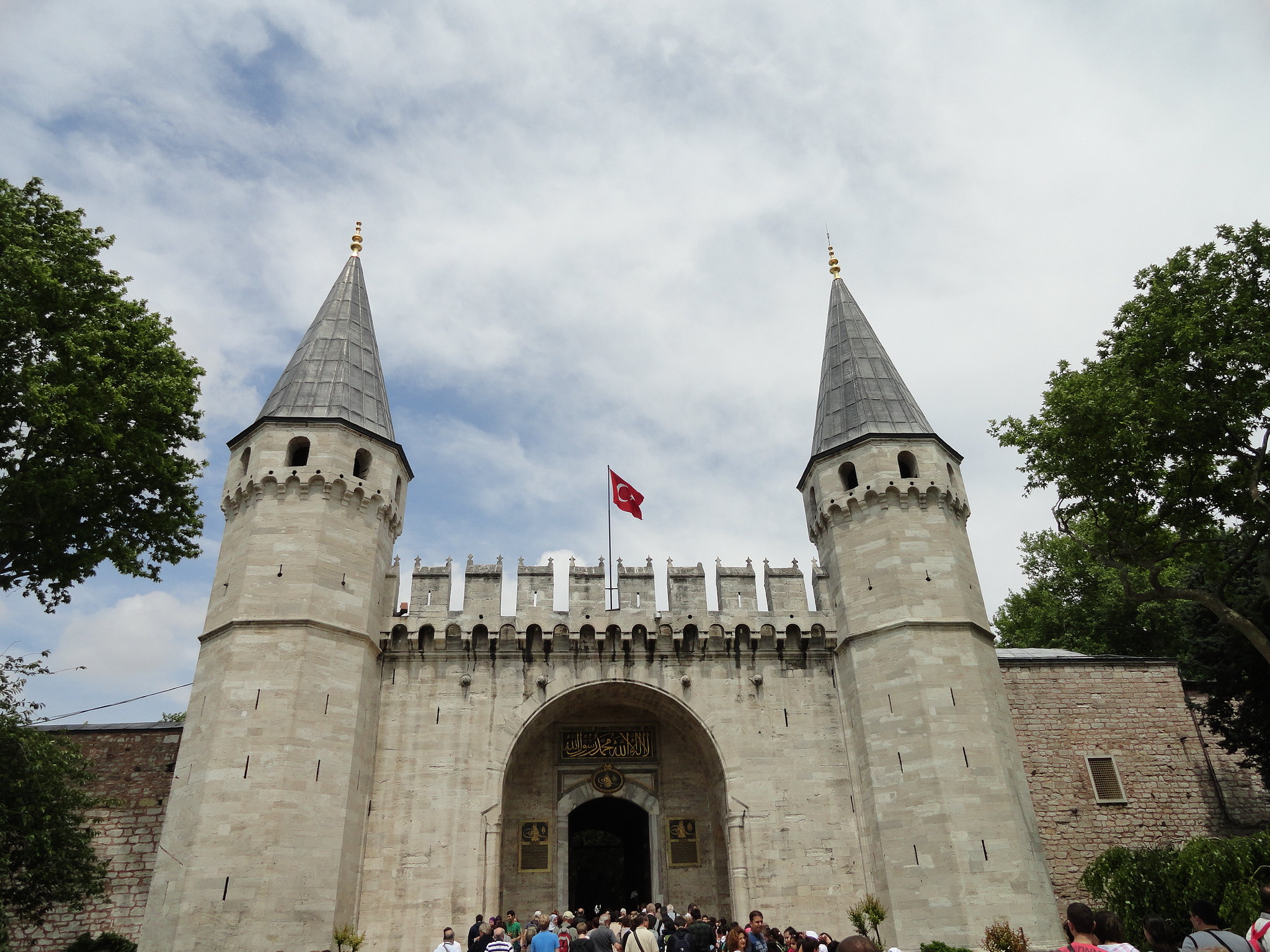Topkapi Palace, located in Istanbul, Turkey, was the primary residence and administrative center of the Ottoman sultans for nearly 400 years. Built in the 15th century by Mehmed the Conqueror, this sprawling complex served as the heart of the Ottoman Empire until the mid-19th century. Situated on the Seraglio Point overlooking the Golden Horn, the Bosphorus, and the Sea of Marmara, the palace covers an area of approximately 700,000 square meters.
It consists of four main courtyards and numerous smaller buildings, including the Imperial Harem, the Treasury, and various pavilions. Topkapi Palace houses an extensive collection of Ottoman artifacts, relics, and treasures, making it one of Turkey’s most important museums and a UNESCO World Heritage site. The palace’s architecture, intricate tile work, and lush gardens offer visitors a glimpse into the opulence and power of the Ottoman Empire at its zenith.
Topkapi Palace, the sprawling Ottoman imperial residence in Istanbul, has long captivated visitors with its opulent architecture and rich history. But perhaps no part of this grand complex has sparked more intrigue and fascination than the harem, a secluded world within the palace walls that was once home to the sultan’s wives, concubines, and children.
For centuries, the harem remained shrouded in mystery, its secrets closely guarded and its inhabitants hidden from public view. Today, however, visitors to Topkapi Palace can catch a glimpse of this once-forbidden realm, as portions of the harem have been opened to the public, offering a tantalizing peek into the lives of those who lived and loved behind its ornate doors.
As you step into the harem, you’re immediately struck by the intricate beauty of its design. Elaborate tile work adorns the walls, while gilded ceilings and stained-glass windows create an atmosphere of otherworldly splendor. It’s easy to imagine the sultans and their families moving through these opulent chambers, their every need attended to by a small army of servants and eunuchs.
One of the most impressive spaces within the harem is the Imperial Hall, a grand reception room where the sultan would entertain his family and closest confidants. The room’s soaring ceilings and lavish decorations speak to the immense wealth and power of the Ottoman Empire at its height. Nearby, the Privy Chamber of Murat III offers a more intimate glimpse into the private life of one of the empire’s most powerful rulers.
As you wander deeper into the harem, you’ll discover a labyrinth of corridors and smaller chambers, each with its own story to tell. The Queen Mother’s apartments, for instance, reveal the significant influence wielded by the Valide Sultan, the mother of the reigning sultan. These women often played crucial roles in palace politics and the succession of power.
One of the most intriguing aspects of the harem is the hierarchy that existed within its walls. At the top was the sultan himself, followed by his mother and his favorite wives or concubines. Below them were the other members of the harem, including lesser wives, concubines, and the children born to them. This complex social structure was governed by strict rules and protocols, with each inhabitant knowing their place in the pecking order.
Despite the popular image of the harem as a place of unbridled sensuality, the reality was often far more mundane. Many of the women who lived there spent their days engaged in domestic tasks, education, and religious observances. Competition for the sultan’s attention could be fierce, and life in the harem was not without its dangers and intrigues.
As you explore the harem’s hidden chambers, it’s impossible not to feel a sense of connection to the countless individuals who once called this place home. Their hopes, fears, and dreams seem to echo through the centuries, inviting us to imagine what life might have been like within these gilded walls.
While much of the harem remains off-limits to visitors, the sections that are open offer a fascinating window into a world that was once completely closed off from outside eyes. As you leave the harem and step back into the bustling courtyards of Topkapi Palace, you can’t help but feel that you’ve been granted a rare glimpse into one of history’s most enigmatic and captivating institutions.
The harem of Topkapi Palace may no longer house the sultans and their families, but its allure remains as strong as ever. For those willing to look beyond the surface, its hidden chambers continue to reveal tantalizing secrets about life in the heart of the Ottoman Empire.
Topkapi Palace stands as a testament to the grandeur and power of the Ottoman Empire, serving as the imperial residence and administrative center for nearly four centuries. Its intricate architecture, lavish decorations, and extensive collections of artifacts offer invaluable insights into Ottoman history, culture, and governance. The palace’s strategic location overlooking the Bosphorus Strait further emphasizes its significance in controlling trade routes and defending the empire. Today, Topkapi Palace remains an iconic symbol of Istanbul’s rich heritage, attracting millions of visitors annually and continuing to inspire awe and fascination with its opulent displays of Ottoman wealth and artistry.

